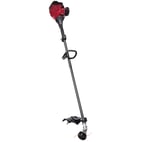
Official Echo gas line trimmer parts
You depend on your Echo gas line trimmer to help you keep your yard looking great. You'll want to keep your Echo gas line trimmer in top shape by performing regular maintenance and repairs. When you need Echo line trimmer replacement parts, you'll find what you need at Sears PartsDirect.
Showing 1-4 of 4
Showing 1-4 of 4
